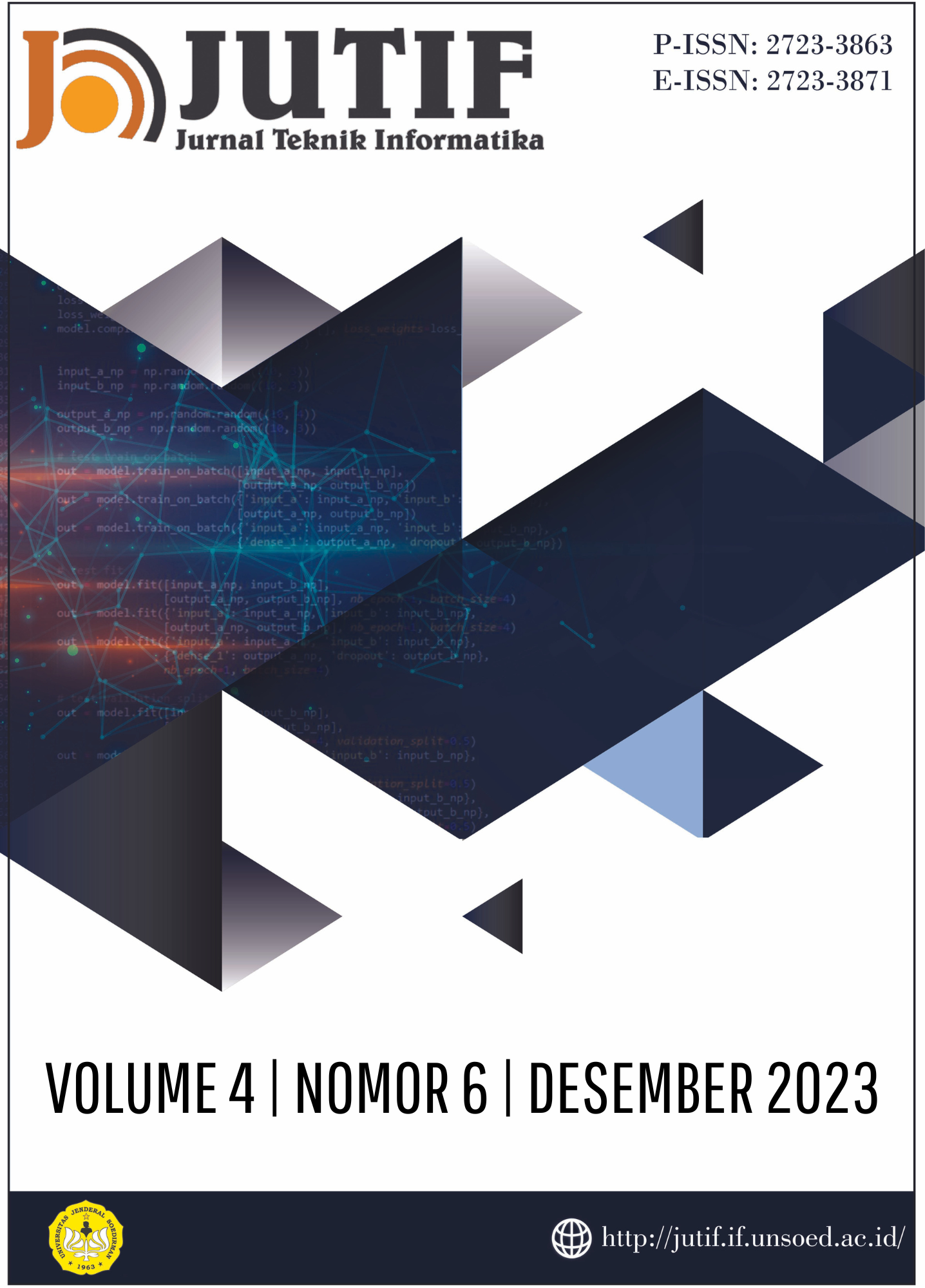REAL TIME ONLINE EXAM PROCTORING SYSTEM IN HIGHER EDUCATION USING WEBRTC TECHNOLOGY
DOI:
https://doi.org/10.52436/1.jutif.2023.4.6.1564Keywords:
live proctoring, online exam, real-time, webrtcAbstract
The low level of trust in online exam results from students is a major problem because it is difficult to monitor whether test takers are taking the exam honestly according to their own abilities. Even though it has been assisted by the presence of video conferencing applications such as Zoom, Google Meet, Cisco Webex and similar applications, online exam proctoring is still unable to run effectively. Cheating in online exams, such as using dual monitors, is very possible for exam participants. Therefore, as a future preventive measure in the online exam process, a system is needed that can accommodate this concern. This research will create an online exam supervision system with WebRTC technology which has features to accommodate real-time supervision. The System Development Life Cycle method will be used in software development with 5 main stages, namely Requirement Analysis, Design, Development, Testing, and Maintenance. Implementation of the system was carried out during the online examination process for a class at one of the universities in Surabaya. Finally, the test results show that features such as: Live Proctoring get a score of 4.5; Attention Alert gets a score of 5; Exam Lock scored 4.5; Live Alert scored 4.5; and Tab & Window Detection got a score of 4; shows that this system has succeeded in providing a solution in online exam proctoring needs.
Downloads
References
R. Raman, B. Sairam, G. Veena, H. Vachharajani, & P. Nedungadi, "Adoption of online proctored examinations by university students during covid-19: innovation diffusion study", Education and Information Technologies, vol. 26, no. 6, p. 7339-7358, 2021. https://doi.org/10.1007/s10639-021-10581-5.
N. Selwyn, C. O'Neill, G. Smith, M. Andrejevic, & X. Gu, "A necessary evil? the rise of online exam proctoring in australian universities", Media International Australia, vol. 186, no. 1, p. 149-164, 2021. https://doi.org/10.1177/1329878x211005862
A. Prabowo and D. Wardani, "Faktor-faktor yang mempengaruhi kecurangan akademik pada perkuliahan online", Kajian Bisnis Sekolah Tinggi Ilmu Ekonomi Widya Wiwaha, vol. 29, no. 1, p. 16-29, 2021. https://doi.org/10.32477/jkb.v29i1.235.
E. Bilen and A. Matros, “Online cheating amid COVID-19,” J Econ Behav Organ, vol. 182, pp. 196–211, Feb. 2021, doi: 10.1016/j.jebo.2020.12.004.
J. M. Dyer, H. C. Pettyjohn, and S. Saladin, “Academic Dishonesty and Testing: How Student Beliefs and Test Academic Dishonesty and Testing: How Student Beliefs and Test Settings Impact Decisions to Cheat Settings Impact Decisions to Cheat,” 2020. [Online]. Available: https://dc.cod.edu/testing_pubs.
R. Conijn, A. Kleingeld, U. Matzat, & C. Snijders, "The fear of big brother: the potential negative side‐effects of proctored exams", Journal of Computer Assisted Learning, vol. 38, no. 6, p. 1521-1534, 2022. https://doi.org/10.1111/jcal.12651.
J. Pleasants, J. M. Pleasants, and B. P. Pleasants, “Cheating on Unproctored Online Exams: Prevalence, Mitigation Measures, and Effects on Exam Performance,” Online Learning Journal, vol. 26, no. 1, pp. 268–284, Mar. 2022, doi: 10.24059/olj.v26i1.2620.
C. Hébert, “Online Remote Proctoring Software in the Neoliberal Institution: Measurement, Accountability, and Testing Culture,” 2021. [Online]. Available: https://orcid.org/0000-0001-9775-9416.
K. Linden and P. Gonzalez, “Zoom invigilated exams: A protocol for rapid adoption to remote examinations,” British Journal of Educational Technology, vol. 52, no. 4, pp. 1323–1337, Jul. 2021, doi: 10.1111/bjet.13109.
L. M, L. Luo, S. Sikdar, N. Nizam, S. Gao, H. Shanet al., "Optimized collusion prevention for online exams during social distancing", NPJ Science of Learning, vol. 6, no. 1, 2021. https://doi.org/10.1038/s41539-020-00083-3.
S. Fauzi, “OKTAL : Jurnal Ilmu Komputer dan Science Pengembangan Aplikasi Ujian Online Berbasis Web Dengan Memanfaatkan Teknologi Web Real-Time Communication (Web RTC) Di SMP PGRI BAYAH,” 2022, [Online]. Available: https://journal.mediapublikasi.id/index.php/oktal.
R. Ainanda and E. V. Haryanto, “Rancang Bangun Aplikasi E-meeting Menggunakan WebRTC (Web Real time Communication) Design and Build E-meeting Applications Using WebRTC (Web Real time Communication),” 2020.
F. N. Azzam, D. P. Kartikasari, and F. A. Bakhtiar, “Implementasi Video Conference dengan File Sharing menggunakan WebRTC,” 2019. [Online]. Available: http://j-ptiik.ub.ac.id.
M. A. Arshad et al., “Psychological Support Application Using The Real-Time Webrtc: A Case Study Of Undergraduate In Malaysian And Indonesian Higher Learning Institutions,” 2021.
J. LEE, "Impact of proctoring environments on student performance: online vs offline proctored exams", Journal of Asian Finance Economics and Business, vol. 7, no. 8, p. 653-660, 2020. https://doi.org/10.13106/jafeb.2020.vol7.no8.653.
A. Spillner and T. Linz, Software Testing Foundations. dpunkt.verlag Heidelberg.
“Usability 101: Introduction to Usability.” https://www.nngroup.com/articles/usability-101-introduction-to-usability/ (accessed May 20, 2023).



























